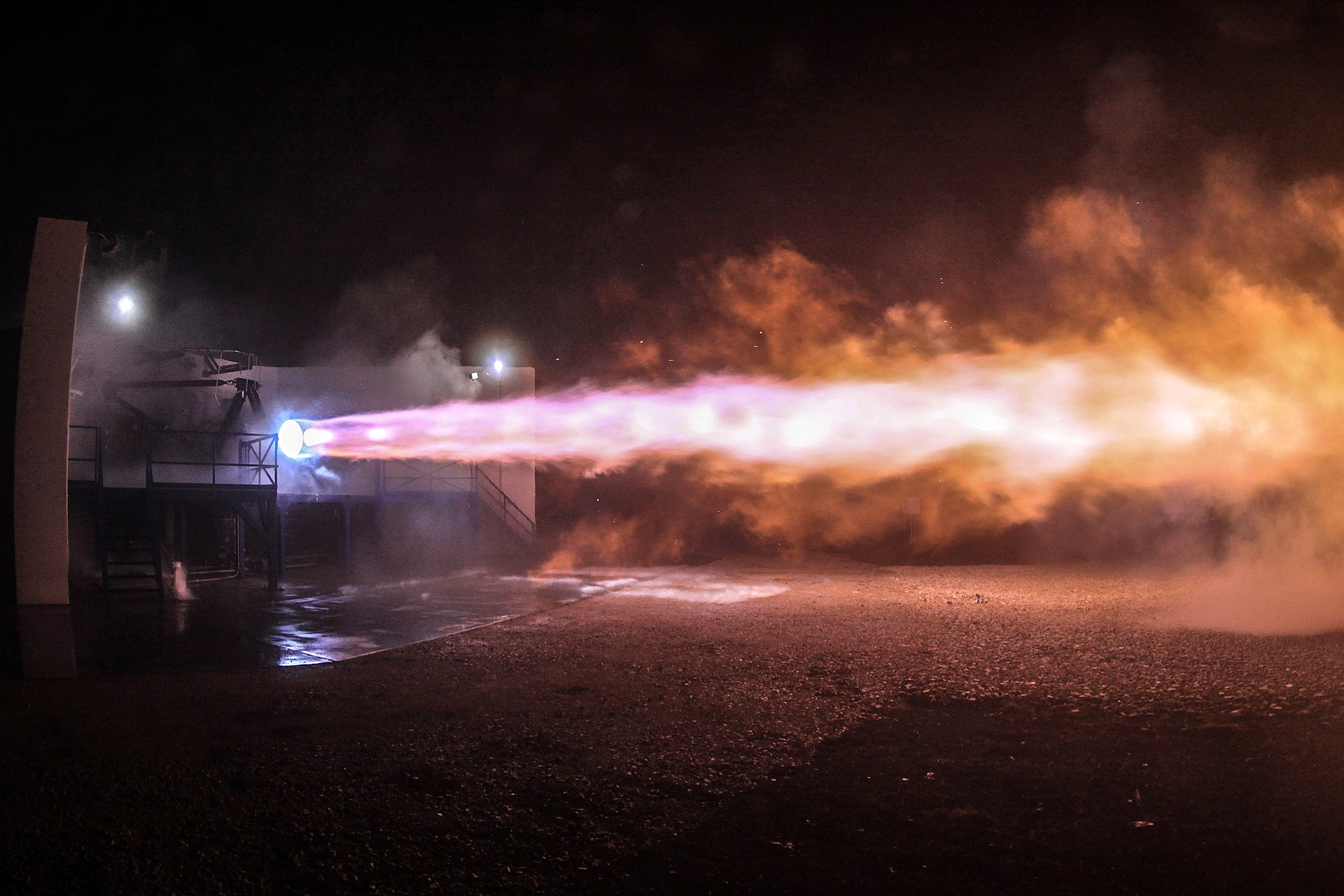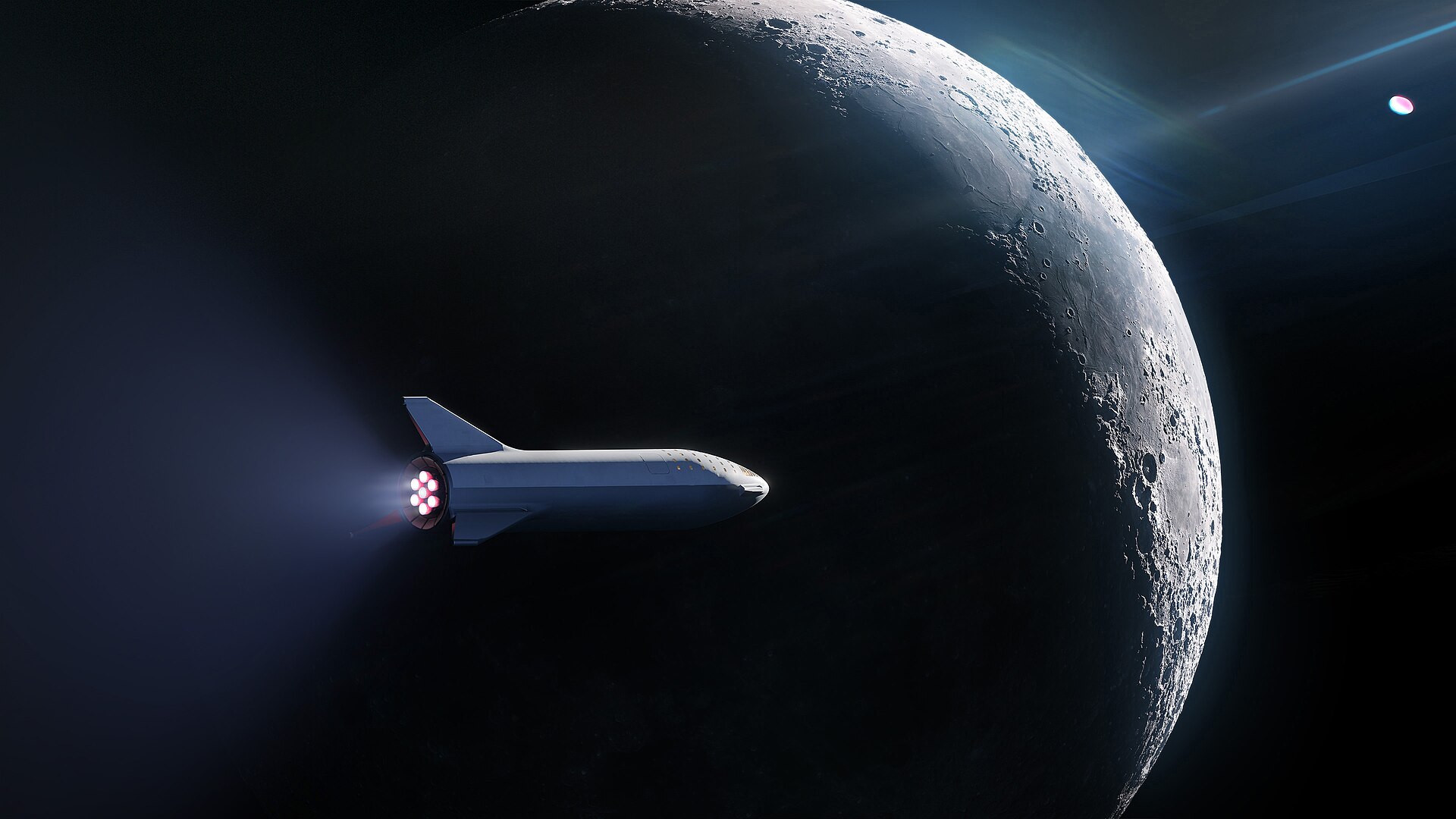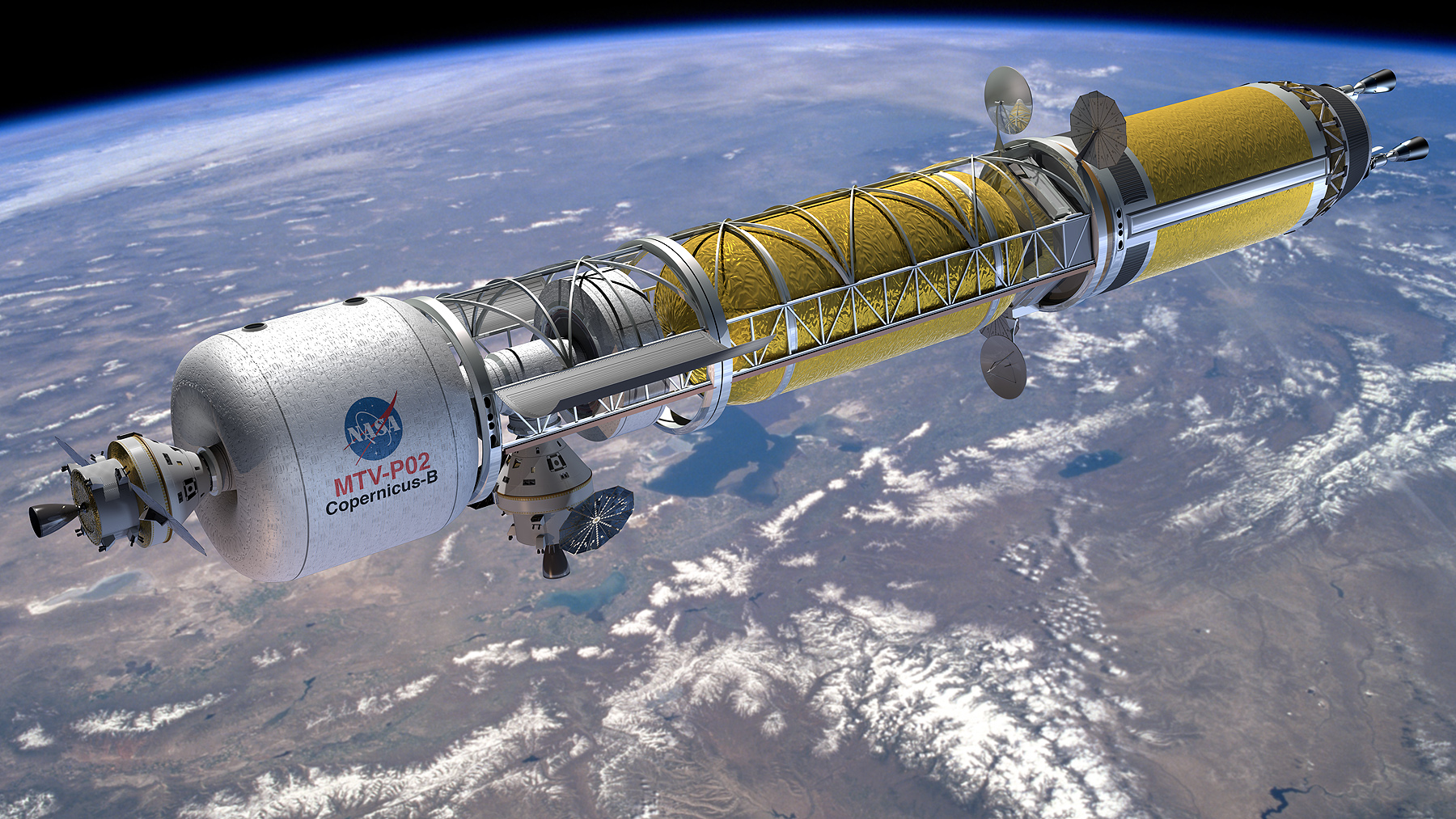Op-Ed: The Cases For and Against Crewed Starship

Chapter 1 – History
To understand why Starship in its current state is the way it is, we need to take a look back at the history of it. Starship’s history starts four years ago in 2016 with the ITS – Interplanetary Transport System. If you’re already well versed in the history of Starship, skip to Chapter 3 – No Way Out.
2016 – Interplanetary Transport System
When SpaceX first unveiled the plan for the Interplanetary Transport System in 2016, the world stood mystified. What seemed like science fiction was now a real concept proposed by a company that had quickly established itself as a leader in the NewSpace market. ITS would be the dream everyone wanted – a fast, efficient way to transport 450 tons to Mars, and almost a hundred crew, much more than we could ever dream of sending to even Earth orbit before then.

ITS, like its descendants, is a two-stage design, however, both stages are 12 meters in diameter. The launch would be similar in behavior to a Falcon 9 – the first stage would lift ITS to a suborbital trajectory, and then return to launch site – literally. Stage One would land directly on 39A, with no room for error, requiring a precision much higher than Falcon 9 Block 5’s current 89%, as of writing.

Stage Two would continue into orbit, where it would then await multiple “Tanker” ITS stages to refuel it. The “Shuttle” stage would not have enough fuel on launch to continue to Mars or even possibly the Moon, and it required in-flight refueling. The “Shuttle” would then continue and land on its destination, with either crew and passengers or cargo.
With ITS came the Raptor engine, which is the sole survivor of the original ITS design. Raptor is a methane-oxygen powered engine using a “full flow” cycle to achieve an efficiency of 382 seconds of specific impulse at a thrust of 2 mega-newtons (440,000 pounds-force). Raptor is an equivalent engine to the Space Shuttle Main Engine – the RS-25, which ran off hydrogen-oxygen. However, it is considerably cheaper.

ITS in its 2016 revision was like a dream come true – except, it wouldn’t. All that survives of the original ITS design is a 12-meter composite tank, and the Raptor. 2017 came, and with it, the Big “Falcon” Rocket (colloquially known as the “Big Fucking Rocket”).
2017 – Big Falcon Rocket
/arc-anglerfish-arc2-prod-mco.s3.amazonaws.com/public/RJ24MG5OLVCQDCBA3J3FRONSMI.jpg?w=800&ssl=1)
In September 2017, a year after the unveiling of the ITS, the new revision came with the Big Falcon Rocket, or BFR, for short. BFR replaced the 12-meter diameter stage with a nine-meter stage, and integrated a delta-type wing into the fuselage, akin to the Space Shuttle. BFR came not only with the same, yet now reduced claims of spaceflight capability, but a very out-of-this-world claim: Earth to Earth.
Earth to Earth was SpaceX’s way of one-upping every form of transportation we have from cars to Concorde. The main bold claim was “Anywhere on Earth within an hour”, with at least 50 passengers or 150 tons of cargo. The impressive cargo claims even caught the eye of the military – DefenseNews reported in August of 2018 that the head of the Air Mobility Command was interested in using them to move cargo faster and cheaper than the C-5 Galaxy. (It is important to note: The C-5 is not a cheap craft to operate at $100,000/flight hour).
BFR remained the status quo for the Starship heritage until September 2018 – when the Dear Moon project unveiled.
2018 – Dear Moon

In September of 2018, Elon Musk and Japanese billionaire Yusaku Maezawa revealed the dearMoon project. dearMoon aimed to fly six to eight artists, plus Yusaku himself, to the Moon by 2023 on Starship. The flight would fly around the Moon in a similar trajectory to Apollo 13, without entering orbit or landing. This serves to be the first crew mission scheduled on Starship.
Starship in its 2018 revision maintains the nine-meter diameter fuselage, but replaces the fin arrangement. There are now 3 fins at the back and two canards at the front, and the back two fins actuate to form what SpaceX called a “skydiver trajectory”.
With 2018 Starship came “Starhopper”, a small, largely un-functional aft-section of a Starship made to test the new tank design and final landing propulsion. The tanks were now made out of 300 series stainless steel welded rings, which would eventually prove to back-stab Starship.
This was the first real test article of Starship to fly, and the first time a Raptor engine flew in real flight. Starhopper completed a 20-meter altitude hop in July of 2019, and a second, ultimately final hop in August, achieving an altitude of 150 meters and landing 100 meters downrange.
During Starhopper’s tests, two new SpaceX outposts quickly popped up in Boca Chica, Texas, and Cocoa Beach, Florida. Starhopper flew out of Boca Chica, but both were busy constructing the next generation of Starship.
Chapter 2 – Starship Today

September of 2019 saw the unveiling of what the Boca Chica outpost had been working on for months – Starship Mark 1. From top to bottom – Mark 1 was constructed out of purely stainless steel panels and rings, it had two canards at the top, a set of two main wings at the bottom (which would actuate like Starship Rev.2018), and three Raptor engines, for an eventual proposed test of a 20-kilometer high flight. Starship was going to fly, and this time, much higher than Starhopper.
And then it all came crumbling down. On November 28, 2019, Starship Mk1 exploded unintentionally during a pressure test, destroying the single fully completed Starship ever built. The upcoming Mark 2 from Cocoa Beach was described as “dead before arrival” by Teslarati. What would come next?
Serial Number 1, previously known as Mark 3, was now in construction at Boca Chica. An orbital prototype which was first slated to fly the 20km test, it now wouldn’t fly for a while, due to the results of Mk1. First, two tank test articles were tested at Boca Chica. On January 10, 2020, a tank was purposely tested to destruction, achieving rated pressure at 7.1 bar, and then the second article achieving 8.5 bar before exploding, precisely the orbital safety margin. Starship was making progress, and things seemed optimistic.
Once more, disaster struck. On February 28, 2020, Starship SN1’s internal tank prototype exploded, once more during a pressure test. SpaceNews reporter Jeff Foust described the failure by saying that “The vehicle appeared to come apart near the bottom, sending the top section flying, with a second burst after that section hit the ground.”
The next Starship iteration, SN2, was built again at Boca Chica. It was a small-scale tank, on a similar scale to Starhopper, with three Raptor engines for integration testing. It never flew, but it did fix the thrust-puck issues that caused SN1 to explode. SN2 passed its cryogenic test on March 9, 2020, and was then retired.
With this problem solved, SN3 now began construction. SN3 was planned to be a vehicle capable of the elusive 20-kilometer test and Raptor static fires, and planned to be a full-scale Starship like Mark 1. Pressure testing began on April 3, 2020. A test configuration error led to the vehicle imploding in a much less destructive fashion than SN1 and Mark 1.
With that, we reach April 21, the present day. SN4 is under construction, 3 Starship prototypes have failed catastrophically, and only two have succeeded, none of which were full-scale. The failure of SN3 also shows a quality of Starship today – it is in a semi-stable tank configuration.
These are all tests, and testing will improve. However, if such a failure were to happen – and failures do happen, where’s the way out? Fighter jets have ejection handles, cars have airbags and seatbelts, spaceships have abort systems.
Where’s Starship’s abort system?
Chapter 3 – No Way Out
This is the Against Starship side. Chapter 4 is For Starship.
The answer to the previous question: There isn’t one. For cargo, there is no problem with that. Satellite owners can choose whether to launch on Starship or not, and they have teams of people making educated choices about this. They are not SpaceX – and they do not have to use Starship. Plus, Starship prices may become so competitive, a chance of losing a satellite may become so minor it is worth it to assume the risk.
For crew, that is absolutely not okay. Starship should not be allowed to fly in its current configuration until safety improvements are made. NASA’s Commercial Crew requirements, for example, require at least a form of abort system that has a reliability factor of 0.995 (1 being perfect). This is the same standard today’s modern crew capsules, Crew Dragon, and Starliner, are held to. Soyuz has also demonstrated successful abort capability in a real scenario within the last few years.

To go through three safety Commercial Crew requirement Starship blatantly misses in its current design (a Commercial Crew slideshow with requirements can be found here), there is:
- 3.3.1.1/R.CTS.55 – Pad Abort. Starship currently has no full abort system nor does the second stage have the thrust to lift Starship fast enough to pad abort.
- 3.3.1.5/R.CTS.59 – Abort System Reliability >0.995. Starship currently has no full abort system and therefore cannot meet this requirement.
- 3.3.1.6/R.CTS.60 – Abort System Effectiveness. Starship, again, currently has no full abort system and cannot meet this requirement.
- For both 3.3.1.5 and 6, the vehicle must be tolerant to “Uncontained engine failure” and “blast overpressure and blast debris exposure to the spacecraft.”
All of these are highly critical elements of safety that would otherwise prevent a launch vehicle from flying if violated, at least under NASA’s Commercial Crew program. While NASA does not control Starship in any manner, it can refuse to fly its crew aboard Starship. However, any SpaceX astronauts will likely not have a choice, meaning that if Starship intends to have crew aboard, they will be in danger.

We have flown vehicles before without abort systems. Gemini flew without one, and the Space Shuttle also flew without one. However, we lost 14 lives aboard the Shuttles, and almost lost more, such as STS-93/Columbia (the “gold bullet” incident) and STS-27/Atlantis. The Space Shuttle is lucky to have not killed twice as many astronauts as it did, and should not be a role model by any means.
On top of this, the current landing technology employed by SpaceX is unacceptable for crew at this time. Falcon 9 Block 5 has a current landing recovery rate of 87% (taken from the ratio of failed landings to landing attempts available here), which if the same tech was used for Starship, would equate to a 13% chance to lose the whole craft, possibly with the crew too. This, of course, is bound to change as the landing systems are refined, but propulsive landing in its current state is not reliable.
There are even more fears with Starship, although not as critical as the Commercial Crew requirements. With the recent tank implosions, one could argue that if Starship suffered such a failure with real fuel – the explosion would be larger than the N-1 and akin to a low-yield nuclear bomb. (The N-1 explosion was 2.9 kT of TNT, a Starship explosion may well be over 4 to 5 kT. The Hiroshima bomb, for comparison, was 15 kT.)
While this is simply an assumed risk with making rockets larger – Starship in its current tank layout appears to be prone to implosion and a crumple akin to the current tests could prove deadly to not just crew but any individual or building in a certain radius. This could be addressed by doing sea-launch, like Sea Dragon.
With all of these and many more unaddressed concerns, Starship is simply too unsafe in its current configuration to fly. Starship must meet commercial crew requirements, or it should be barred from flying.
However, there are always two sides to a coin…
(Sidenote: This should not be misinterpreted as “Starship should never fly”, but instead a warning about it flying in its current configuration.)
Chapter 4 – How Safe is Safe Enough?
Maybe Starship doesn’t need a full abort system? While the extra safety would be great – and Starship could use some safety enhancements, the lack of a full abort system should not be the end for Starship. Commercial Crew guidelines were devised for capsules that would fly infrequently and with critical missions. Safety on these would be paramount as the turnover time between missions would be long enough to allow infrastructure to deteriorate.
Vehicles without full abort systems have indeed suffered. The largest instance of this would be the Challenger disaster, but that was of no fault of the Shuttle. Many guidelines, specifically pertaining to the booster O-rings at cold temperatures such as those experienced on the day of the disaster, were blatantly violated so NASA could launch it earlier.
That is also not to say Starship cannot have an abort system at all. Elon Musk has proposed that the vacuum Raptor engines can be used in an abort case to lift Starship fast enough to theoretically escape an explosion from the pad. Such a system could also be used in flight, but this does risk the engine bells of the vacuum Raptors as they will be suffering from under-expansion and could tear themselves apart. To combat this, Elon suggests that the bells could be fixed against the hull so they can be stabilized for just long enough to abort.
What abort modes would Starship be capable of? To cross-check with the Space Shuttle:
- RTLS abort: Only possible if Starship can pull itself from an exploding Super-Heavy first stage, and then expend enough fuel to land with a light amount. Would require Masten-like landing guidance.
- Trans-Atlantic Abort: Likely not possible. There are no real pads configured to take a Starship across the Atlantic. It would be possible otherwise.
- Abort Once Around: Likely possible. Starship could enter a rapidly decaying orbit and return quickly to the launch site.
- Abort To Orbit: Highly likely. Abort to Orbit was a mode used when the specified orbit could not be reached but a lower orbit could be reached. This would happen in an engine-out scenario.

To add, it is easy to look at Starship’s current failures and say it should never fly. However, tests are tests. The point of testing, however destructive, is to fix issues. Tests may look bad, but for as long as nobody is hurt, there is no safety reason to not test. Reliability – and safety in turn – improves with more tests.
Is it possible to be too safe? Yes. The Space Shuttle experienced horrible delays and setbacks due to meaningless safety improvements post-Challenger, that were never needed due to the disaster being a management problem. The Shuttle suffered purely out of a “can never be too safe” attitude, and safety is a double-edged sword.
Chapter 5: Striking a Balance

Certainly, Starship is challenging the world-view of all of those in the spaceflight community and industry. To say the least, it would be a revolutionary vehicle if launched, though vehicles like this have been in concept stages for years. From the Constellation Mars Transfer Vehicle to concepts as old as Sea Dragon and the Integrated Manned Interplanetary Spacecraft, gigantic vehicle concepts have been a staple of spaceflight for decades. We must eventually return to the realm of the super heavy lifter if we are to colonize the Moon or go to Mars for long periods. An era in which the Saturn V is still the most powerful lifter ever built 55 years later is one that we have failed to innovate in and chose to stagnate instead.
Whether it is Starship, SLS Block 2, or another vehicle, we must return. It is either that, or humanity stagnates on Earth, never to go further than our own Moon at most. Risks will have to be taken, but that is not to say they shouldn’t be minimized. We can not rush, but we also must not wait. We must be safe, but we must not over-do it. If we are to go to the Moon, if we are to go to Mars, if we are to go further, we must strike the balance.



